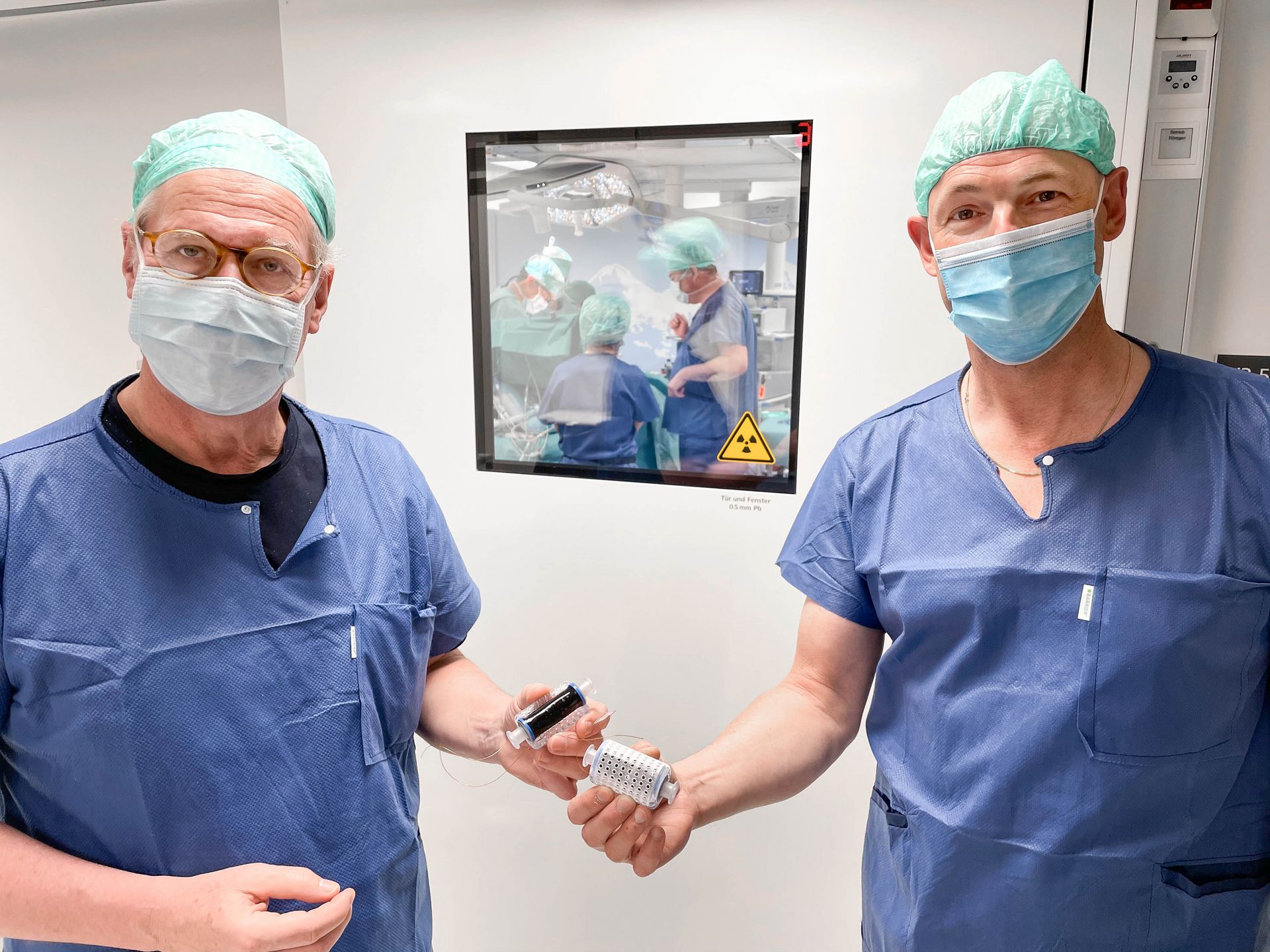
Testing the artificial muscle’s strength
The newly developed “heart-helping” actuator is a so-called ventricular assist device (VAD) and is fitted directly behind the aortic valve. When connected to an electric current, the device expands, similar to the natural motion of the aorta. And when the current is switched off, the device contracts again. The VAD is steered by waves of electrical impulses generated by the heart itself.
The innovative VAD now functions so reliably in computer simulations that award-winning Swiss cardiac surgeon Thierry Carrel aims to validate it in animal experiments as soon as possible. Carrel and his team of surgeons plan to test the device on pigs as early as April of this year. In February 2021, Thierry Carrel left his former position as head of department at Inselspital Bern and professor at the University of Bern after twenty-five years to take on a new role at the University Hospital Zurich. There he is charged with restoring the national and international reputation of the department of cardiac medicine in addition to promoting research and fostering the professional development of young medical staff.
The ethics commission of the Canton of Bern has given the go-ahead for the planned animal experiments at the Department for Biomedical Research at the University of Bern. Project leader Professor Yves Perriard from the Center for Artificial Muscles says, “In the fourth year of the project, we were able to make thorough preparations, and we’re very happy that our devices can now be tested on pigs.”
The devices are ready, and surgeons can begin practising the new, minimally invasive surgery techniques made possible by the artificial muscle. Surgeon Thierry Carrel says, “This is also an important step in further developing the artificial muscles for other surgical uses—for instance, for plastic and reconstructive surgery, urology or abdominal surgery.”
Indeed, the mission to create an artificial muscle has made such great advances over the past four years that the researchers are now turning their attention to ways of using artificial muscles to restore facial expressions to accident patients or to support the urethral sphincter in cases of urinary incontinence.
The CAM researchers will soon begin work on these applications. Nevertheless, Yves Perriard says it will be a while before the artificial muscles are ready for general medical use: “It will take at least ten years before people can benefit from the development.”
Links
> Artificial muscles research project
> Center for Artificial Muscles (CAM)
> Thierry Carrel, cardiovascular surgeon (in German/French)
> Department of Cardiology, University Hospital Zurich (in German)
> Avoiding transplantations thanks to an artificial aorta, healthcare-in-europe.com, 5 February 2021 (in German)